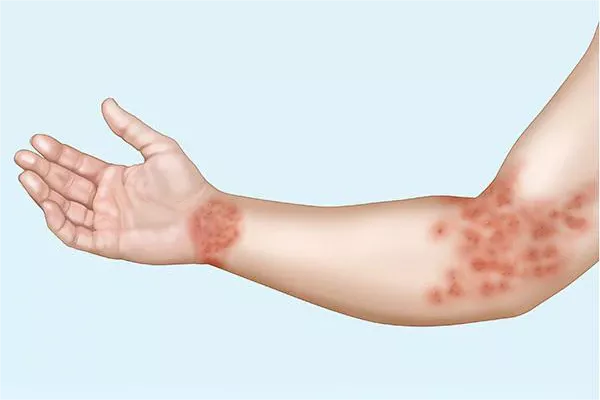Hidradenitis suppurativa (HS) is a chronic inflammatory skin condition characterized by painful nodules, abscesses, and sinus tracts, primarily affecting areas with apocrine glands, such as the axillae, groin, and buttocks. This condition can significantly impact a patient’s quality of life due to discomfort, recurrent infections, and scarring. While HS remains challenging to treat effectively, there is growing interest in the use of salicylic acid as part of the therapeutic approach. Salicylic acid, known for its keratolytic and anti-inflammatory properties, is being explored for its potential to alleviate symptoms and manage the course of HS.
Understanding Hidradenitis Suppurativa
Before delving into the role of salicylic acid in HS management, it’s essential to grasp the underlying pathology of this condition. HS is believed to involve a combination of genetic predisposition, immune dysregulation, and follicular occlusion. The inflammation in HS arises from the rupture of hair follicles, leading to the formation of deep-seated nodules and subsequent abscesses. Bacterial colonization often complicates the condition, contributing to recurrent flares and chronicity.
The management of HS typically involves a multidimensional approach tailored to the severity and extent of the disease. Traditional therapies include antibiotics, anti-inflammatory medications, intralesional injections, and surgical interventions for severe cases. However, many patients experience inadequate responses to standard treatments, underscoring the need for alternative strategies like salicylic acid.
The Therapeutic Potential of Salicylic Acid
Salicylic acid, a beta-hydroxy acid (BHA), is renowned for its exfoliating and anti-inflammatory effects. It works by softening and dissolving keratin, the protein that forms the outer layer of the skin. This action helps to unclog pores and remove excess dead skin cells, which are thought to contribute to the development of HS lesions. Moreover, salicylic acid’s anti-inflammatory properties can mitigate the immune response that drives the formation of painful nodules and abscesses in HS.
Studies exploring the use of salicylic acid in HS management have shown promising results. One key benefit is its ability to reduce hyperkeratosis, a common feature in HS lesions. By thinning the outer layer of the skin and preventing follicular plugging, salicylic acid may help prevent the recurrence of nodules and abscesses. Furthermore, its anti-inflammatory effects could potentially alleviate pain and swelling associated with active HS lesions.
Clinical Evidence and Practical Applications
Clinical studies investigating the efficacy of salicylic acid in HS are limited but encouraging. A small-scale trial demonstrated that topical application of salicylic acid, combined with other therapies, led to significant improvements in lesion count and pain scores among HS patients . Another study highlighted the potential of salicylic acid to enhance the penetration of other medications into affected tissues, augmenting the overall therapeutic effect .
In practical terms, salicylic acid can be administered in various forms for HS management. Topical formulations, such as creams, gels, or wipes, are commonly used to target specific lesions or affected areas. These products are applied directly to the skin and left on for a specified duration to allow for optimal absorption and efficacy. Additionally, salicylic acid can be integrated into cleansers or washes designed for daily use, providing ongoing exfoliation and anti-inflammatory benefits.
Considerations and Future Directions
Despite its potential benefits, the use of salicylic acid in HS management requires careful consideration. Some patients may experience skin irritation or dryness, particularly with higher concentrations of salicylic acid. Therefore, it’s crucial to tailor treatment regimens based on individual tolerances and preferences. Moreover, the long-term effects of salicylic acid on HS progression and recurrence rates warrant further investigation through well-designed clinical trials.
Looking ahead, the integration of salicylic acid into comprehensive HS treatment protocols holds promise for improving patient outcomes. Combining this keratolytic agent with established therapies, such as antibiotics or biologics, may yield synergistic effects and enhance the overall response rate. Furthermore, advances in targeted drug delivery systems could optimize the efficacy of salicylic acid while minimizing adverse effects, paving the way for personalized approaches to HS management.
Conclusion
In conclusion, salicylic acid represents a valuable adjunctive therapy in the management of hidradenitis suppurativa. Its dual action as a keratolytic and anti-inflammatory agent offers a multifaceted approach to addressing the pathophysiological factors underlying HS lesions. While further research is needed to elucidate its full potential and optimal use, salicylic acid holds promise as a safe and effective option for mitigating symptoms, reducing recurrence rates, and improving the quality of life for individuals living with this challenging dermatologic condition.
Related Topics:

























